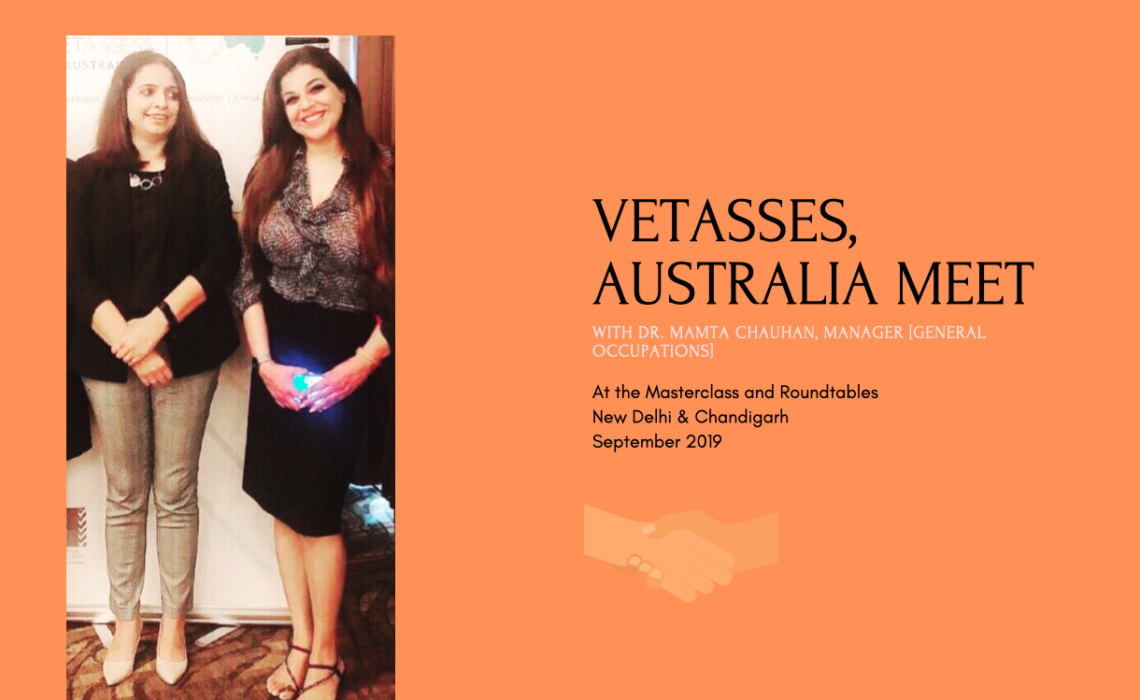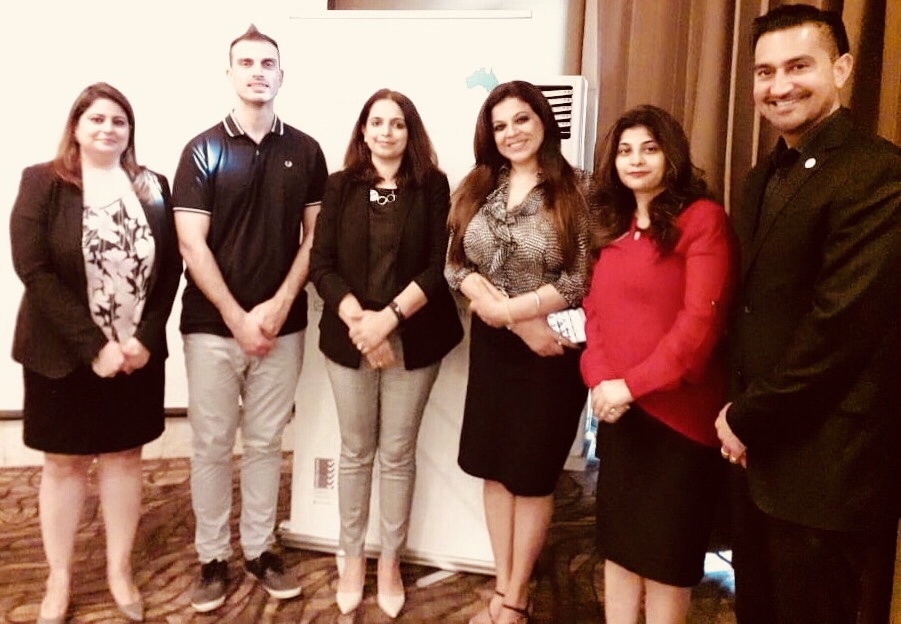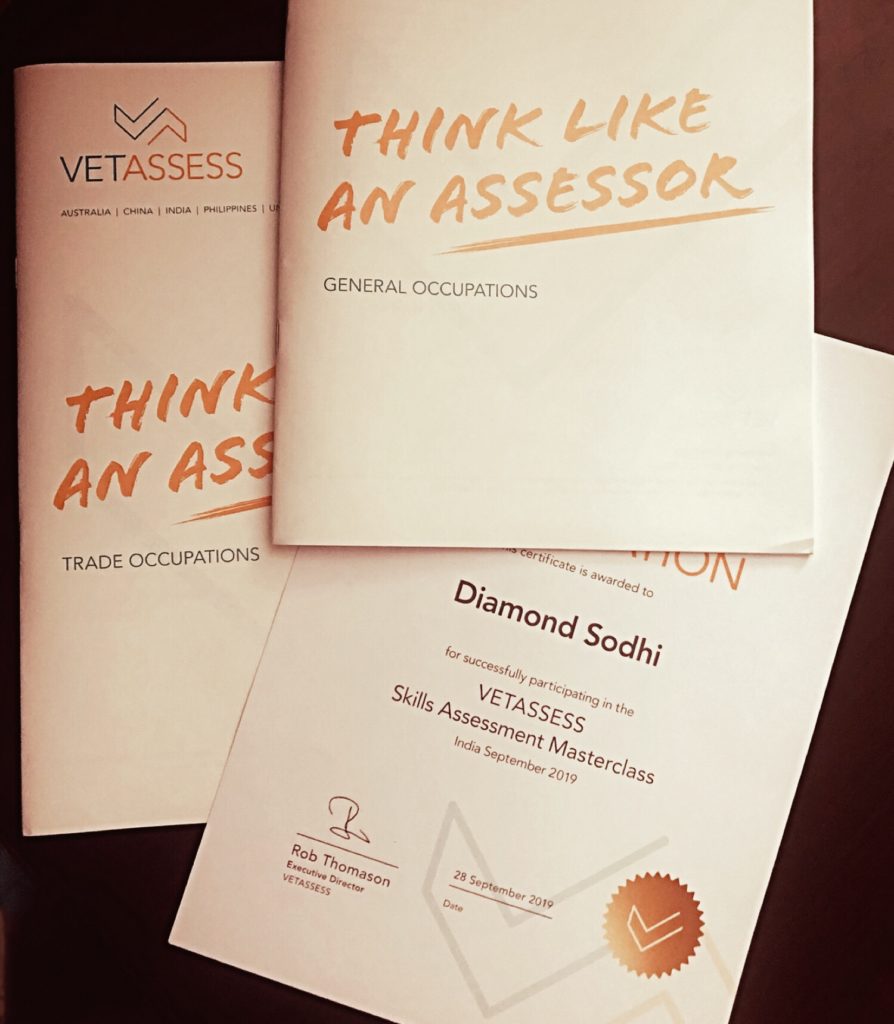
The VETASSESS, the largest skills assessing body providing skills assessments for Australian migration and non-migration purposes for hundreds of occupations [general and trade] held their annual Masterclass in Chandigarh for North India on 28 September 2019.
The Masterclass had migration agents with about two decades of practicing Australian Immigration as well as some new faces in the industry. Prior to the Masterclass held at JW Marriot in Chandigarh on the 28 September, the Roundtable 2019 invited selected migration agents for updates and discussion at Hotel Imperial, New Delhi on 23 September 2019.

The Masterclass held in Chandigarh was an academic session delivered for the continued professional development of migration agents participating in the event from India and Australia.
Amongst, those at the Roundtable in New Delhi were present Dr. Mamta Chauhan- Group Manager General Occupation, Mr. Prashil Singh-Manager, Partnerships Stakeholder Relations, Peter Elovaris- Skills Assessor VETASSESS Trades and Preeti Dang- Regional Advisor for VETASSESS India. The Delhi Roundtable also happened to have Ms. Liz, from the General Skilled Migration, DHA/Australian High Commission for an exclusive interaction with the invitees on the trends and updates on the Skilled Migration Program.
The Roundtable was a more interactive session with a few migration agents discussing the challenges and facilitation for the skills assessments to further streamline the assessment process and on initiatives to make it more responsive.

Some of the key points I’d like to summarise for the benefit of all those participating in the General Skills Migration Programs and the assessments undertaken by the VETASSES [General Occupations and Trades] are as follows:
- The Australian Quality Framework is set to undergo a review and a revamp soon.
- The occupation lists available for the Skilled Migration Program are currently undergoing a review and changes to the current occupation lists which could include reinstatement of certain occupations that had been previously removed from the lists of eligible occupations in March 2020.
- To gear up for the higher volume of applications expected and improve the turnaround time in decision making 15 new assessors are being employed by the VETASSESS for efficient delivery of outcomes.
- Information about group G was detailed. Group G has been recently added to the occupation classifications by the VETASSESS. However, no occupation eligible for the point-based programs 189, 190, 491 [previously known as 489] is enlisted within this group.
- Out of the total number of occupations the VETASSESS currently assesses 73 occupations pertain to the assessments for DAMA and are not available for the General Skilled Migration program. Therefore, if an occupation is listed on the VETASSESS list of occupations that are being assessed, those should not be presumed to be eligible for the GSM program.
- Some of the most popular occupations identified by the VETASSESS are Management Consultants, Customer Service Managers, Café and Restaurant Managers and Marketing Specialists, while on the trades front the top occupations applications apply for are Cooks, Chefs, Fitters, Motor Mechanics, and Hairdressers.
- For India Guru Nanak Dev University and Punjab University happen to be two of the top universities applicants have qualifications from.
Prashil Singh, Manager Stakeholder Partnership Relations was pleased to share with the invitees at the Roundtable that the recent data indicates that 90% of the trades occupations meet with a positive assessment while the general occupations positive outcome rate is 60%. It was further advised that India, as opposed to the UK is an agent-driven country where migration agents play a key and a crucial role in guiding applicants towards submitting more suitably nominated and decision-ready applications. India remains the top country for applicants for skills assessment for migration purposes, he further concluded.
